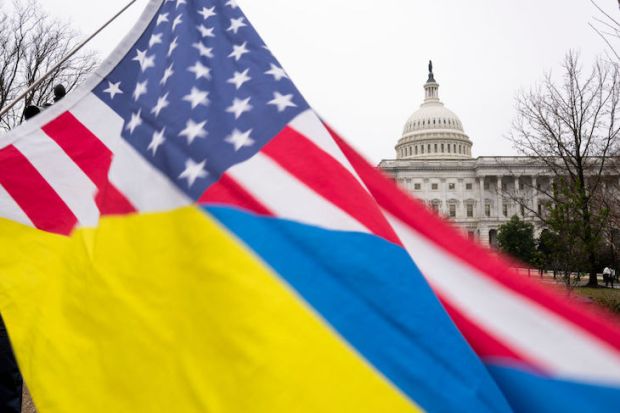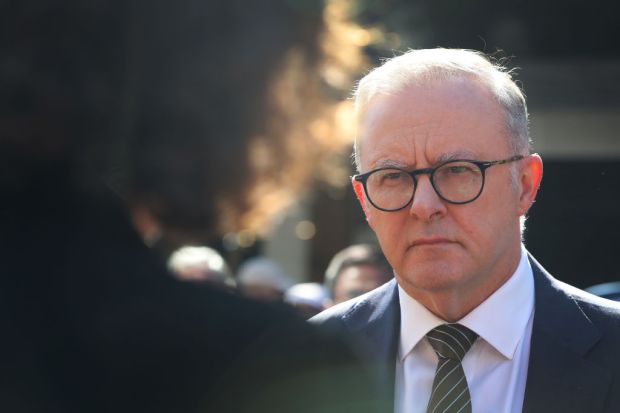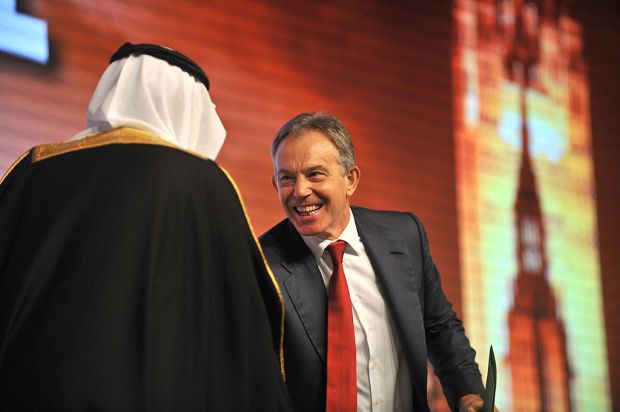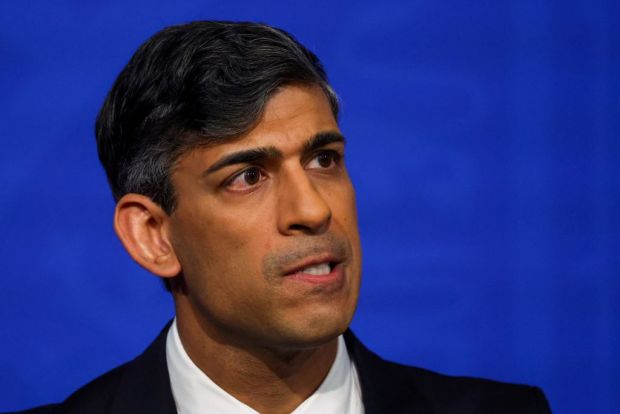As the Russian invasion of Ukraine enters its second month, the war has settled into a largely attritional struggle – and the picture is very different across the various fronts. Russian forces have been forced on to the defensive in many areas. The Russian ministry of defence has announced that the ‘first phase’ of the invasion is over, to be replaced with a more limited focus on Donbas in the east of Ukraine. The reason for this is simple: Ukrainian forces have not only stopped the Russian advances around Kyiv in the north and Mykolaiv in the south-west but have begun to regain towns and cut key Russian supply routes. In the Donbas region in the east, however, Russian and separatist forces continue to make slow, costly progress in repeated assaults along the Donets river defence line. Meanwhile the grinding siege of Mariupol continues with unchecked ferocity. Russia appears desperate to find its first major victory of the campaign in the ruins of the city.
Ukraine has surpassed all expectations in terms of its operation and tactical effectiveness and the extraordinary strength and unity of its soldiers, volunteers and civilians. But for many military analysts, the most striking feature of the first three weeks of the invasion was the almost inexplicably poor performance of the Russian military. The root causes of these shortcomings can be grouped into four areas: structural weaknesses, poor morale, a lack of coherent operational level planning and coordination, and insufficient logistics capacity. Separating these is important to understanding the likely course of the war in the coming weeks. Some are likely to remain inherent limitations for the Russian forces while others are showing signs of mitigation or improvement.
In terms of structural weaknesses, the Russian military has shown itself to have a fundamental problem with core competencies at a tactical level. Russian troops and vehicles are routinely seen advancing or holding position in closely packed groups, often without making effective use of cover or maintaining clear lanes to provide safe covering fire. Tanks and other armoured vehicles regularly move without close infantry support to protect them from anti-tank teams, and close air support arrangements appear sporadic at best. In the air, the roughly 300 modern Russian fighters and strike aircraft allocated to the operational area have failed to gain air superiority due to their inability to conduct effective suppression of enemy air defence operations. They maintain a modest sortie rate of around 200-250 per day – but most of these do not penetrate far into Ukrainian airspace. Instead, most seem to consist of high-altitude fighter patrols near the borders, some of which launch anti-radiation missiles to try and home in on Ukrainian surface-to-air missile systems. The strike sorties are generally conducted both at low level to avoid these missiles and at night to avoid the shoulder-fired missiles carried in large numbers by Ukrainian troops. They generally carry unguided bombs and rockets, which limits their effectiveness except against large, fixed targets. Communications capabilities also seem poor across the Russian forces, with many radios lacking proper military-grade encryption, which is hampering command and control efforts and assisting Ukraine with locating and targeting key Russian commanders. These structural limitations are likely to persist: they are caused by long-term problems which cannot easily be fixed.
Poor Russian morale is an undeniably significant but difficult factor to measure or predict. That hundreds of vehicles were abandoned by their crews during the first month of the invasion, including advanced main battle tanks, air defence systems and electronic warfare equipment, certainly speaks to major problems with morale. However, there is little evidence of large-scale collapse or units routing so far, which might have been expected given the very heavy casualties suffered. Much of the initial shock of unexpectedly being thrown into combat will have worn off at this stage. As Russian units continue to consolidate and operate as larger, more cohesive units with greater oversight, the morale issues may diminish. Enduring morale issues are likely to be a greater problem for Russian attempts to gain ground than to defend what it has already taken. Attacking troops must leave their positions and aggressively move towards enemy fire, whereas defenders will generally be in cover and have a strong self-preservation motive to hold their ground as long as it looks feasible to do so. As Ukraine tries to take back territory, even poorly motivated Russian units may still prove costly and dangerous to dislodge.
Russian coordination and planning at the operational and tactical level was conspicuous by its absence in the first weeks of the invasion. But over the past week it has shown signs of improvement and will probably improve as officers and commanders adjust to the realities of their situation and take more pragmatic actions. For example, the past week has seen significantly increased Russian use of drones to spot for and effectively direct rapid artillery strikes against Ukrainian positions and vehicles, including some surface-to-air missiles. Armour and infantry are coordinating better as formed units alongside artillery support in the attacks against the Donets river line defences. In other words, the Russian army seems to be getting better at applying its tactical doctrine. The new Russian strategy of shifting to a defensive stance (except around Mariupol and in Donbas) also represents a pragmatic decision to try to concentrate forces where they have the greatest chances of sequential successes, rather than continuing to pursue impossible objectives on multiple axes simultaneously.
The final major factor which has hamstrung Russian operations so far has been inadequate logistics capacity to support the multiple advances attempted. The lack of planning and coordination in the first few days greatly exacerbated this limitation as units were sent into combat with insufficient ammunition, fuel, food, winter clothing and medical supplies. When things initially started to go wrong, the Russian response was to order more formations deep into Ukrainian territory down the same roads. This led to large traffic jams, made worse by lead elements being ambushed and destroyed, abandoning their vehicles or simply running out of fuel. Ukrainian light infantry teams with anti-tank weapons and TB-2 drones harried the stalled vehicles, directed artillery strikes and have been successfully hunting resupply convoys which attempt to use smaller roads in the north and north-east of the country. As a result, Russia has lost at least 550 military trucks in a month. An already overstretched logistics system is in crisis. The response has been to concentrate on providing adequate logistical support to the main effort at Mariupol, with the advance in Donbas a second priority. This will inevitably come at the expense of the rest of the Russian forces in Ukraine, which are digging in and hoping to hold what they have taken. If Ukraine can keep up the pressure on the Kyiv, Mykolaiv and Kherson-Chernihiv fronts then logistics are likely to remain a key problem for Russia. If not, Russia will be able to support sequential offensives in the Donbas – and then elsewhere.
Ukraine has every incentive to keep fighting. In the cities and towns it has taken, Russia has kidnapped local politicians and journalists, fired on protestors and looted property. The brutal and deliberate destruction of Mariupol, Kharkiv, Sumy and Chernihiv – including strikes on hospitals and known civilian shelters – are a grim signal of how far Russia will go to exert control in the territory it manages to hold. Western states must continue to support Ukrainian forces with weapons, funding and intelligence. Russian forces have suffered between 30,000 and 40,000 troops killed or wounded according to Nato estimates. Ukraine can recapture significant amounts of its territory and will never get a better chance – as Russian forces will use any ceasefire or lull in fighting to consolidate and resupply their frontlines. However, many of the factors which contributed to the devastating loss rate among Russian forces in the first month will be less significant as they adapt, and as Ukrainian forces increasingly try to move to the attack. Attrition on both sides will be very high as the war enters its new phase.
Got something to add? Join the discussion and comment below.
Get 10 issues for just $10
Subscribe to The Spectator Australia today for the next 10 magazine issues, plus full online access, for just $10.


















Comments
Don't miss out
Join the conversation with other Spectator Australia readers. Subscribe to leave a comment.
SUBSCRIBEAlready a subscriber? Log in